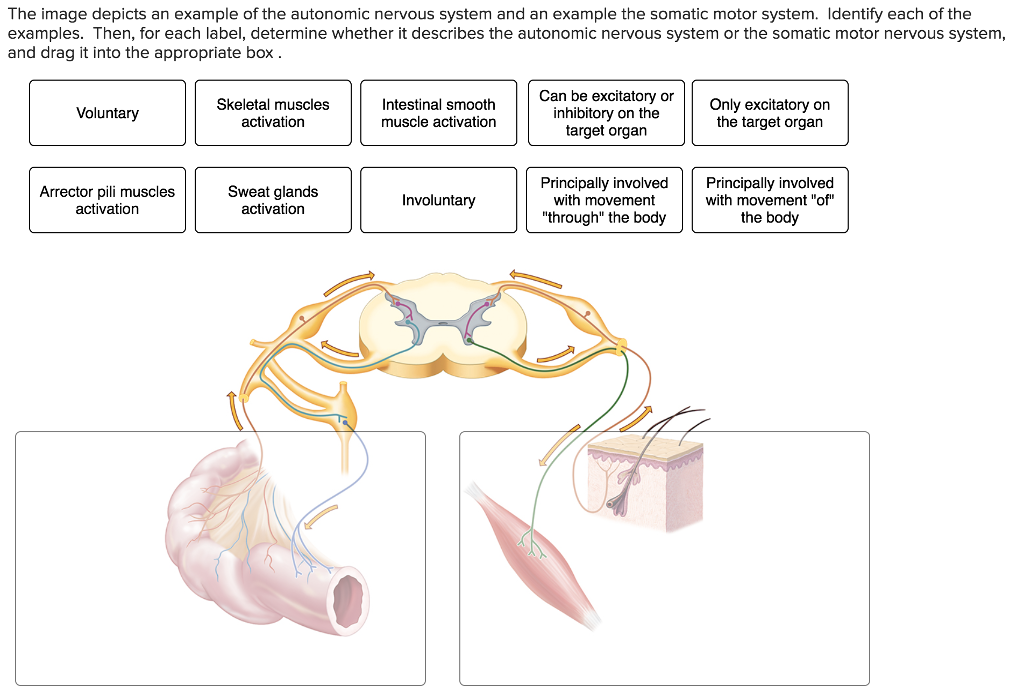

Once the threat has been resolved, the parasympathetic nervous system takes over and returns bodily functions to a relaxed state. Recent research suggests that an increase in susceptibility to heart disease (Chandola, Brunner, & Marmot, 2006) and impaired function of the immune system (Glaser & Kiecolt-Glaser, 2005) are among the many negative consequences of persistent and repeated exposure to stressful situations. This kind of response is not nearly as adaptive in the modern world in fact, we suffer negative health consequences when faced constantly with psychological threats that we can neither fight nor flee. You are in no real physical danger in those situations, and yet you have evolved to respond to any perceived threat with the fight or flight response. For example, think about how you feel when you have to stand up and give a presentation in front of a roomful of people, or right before taking a big test.

#Somatic nervous system ap psychology full
While it is clear that such a response would be critical for survival for our ancestors, who lived in a world full of real physical threats, many of the high-arousal situations we face in the modern world are more psychological in nature.

Reinforce what you’ve learned about the nervous system by playing this BBC-produced interactive game about the nervous system. Homeostasis is a state of equilibrium, in which biological conditions (such as body temperature) are maintained at optimal levels. The two systems have complementary functions, operating in tandem to maintain the body’s homeostasis. The sympathetic nervous system is involved in preparing the body for stress-related activities the parasympathetic nervous system is associated with returning the body to routine, day-to-day operations. It can be further subdivided into the sympathetic and parasympathetic divisions ( ). The autonomic nervous system controls our internal organs and glands and is generally considered to be outside the realm of voluntary control. Each nerve is basically a two-way superhighway, containing thousands of axons, both efferent and afferent. Sensory neurons, carrying sensory information to the CNS, are afferent fibers (afferent means “moving toward”). Motor neurons, carrying instructions from the CNS to the muscles, are efferent fibers (efferent means “moving away from”). It is involved in the relay of sensory and motor information to and from the CNS therefore, it consists of motor neurons and sensory neurons. The somatic nervous system is associated with activities traditionally thought of as conscious or voluntary. The PNS has two major subdivisions: the somatic nervous system and the autonomic nervous system. The peripheral nervous system is made up of thick bundles of axons, called nerves, carrying messages back and forth between the CNS and the muscles, organs, and senses in the periphery of the body (i.e., everything outside the CNS).


 0 kommentar(er)
0 kommentar(er)
